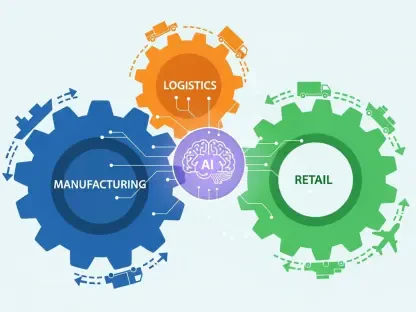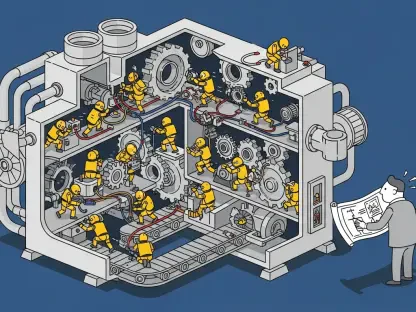I’m thrilled to sit down with Laurent Giraid, a renowned technologist whose groundbreaking work in artificial intelligence has been pushing boundaries in machine learning, natural language processing, and AI ethics. Today, we’re diving into his insights on FSNet, a revolutionary problem-solving tool developed to optimize power grid management and beyond. Our conversation explores how this innovative system tackles complex challenges with speed and precision, the role of machine learning in its design, and its potential to transform various industries. Join us as we unpack the intricacies of this cutting-edge technology and what it means for the future.
Can you give us a broad picture of what FSNet is and why it’s such a big deal for managing power grids?
Absolutely. FSNet is a hybrid problem-solving tool that combines machine learning with traditional optimization techniques to address complex challenges in power grid management. It’s designed to help grid operators find optimal solutions for power flow—ensuring the right amount of electricity gets to the right places at the right time—while minimizing costs and avoiding infrastructure overload. What makes FSNet stand out is its speed and ability to guarantee feasible solutions that don’t break critical system rules, like generator or line capacity limits. For power grids, where demand fluctuates constantly, having a tool that solves these puzzles rapidly and reliably is a game-changer.
What specific advantages does FSNet bring to grid operators compared to older, traditional solvers?
Traditional solvers rely heavily on mathematical models that guarantee solutions meet all constraints, but they can be incredibly slow, sometimes taking hours or days for complex problems. FSNet, on the other hand, uses a neural network to predict a starting solution quickly, then refines it with a feasibility-seeking step. This cuts down solving times dramatically—often by orders of magnitude—while still ensuring the solution is practical. It addresses the sluggishness of older methods, especially as grids become more complex with renewable energy integration and distributed devices.
How does machine learning fit into FSNet’s approach to solving these optimization challenges?
Machine learning is at the heart of FSNet’s first step, where a neural network predicts an initial solution based on patterns it’s learned from data. Think of it as a smart guess that gets us close to the answer much faster than starting from scratch. This predictive power allows FSNet to handle even very intricate problems in a fraction of the time. However, machine learning alone isn’t perfect—it can overlook constraints—so we pair it with a rigorous optimization step to fine-tune the prediction and ensure it’s usable in the real world.
Can you walk us through the feasibility-seeking step in FSNet and why it’s so critical?
The feasibility-seeking step is where FSNet really shines. After the neural network makes its initial prediction, this step uses a traditional optimization algorithm to iteratively adjust the solution, making sure it doesn’t violate any system constraints. It’s like polishing a rough draft into a final product. This is critical because, in power grids, an infeasible solution—say, one that overloads a line—could lead to outages or safety issues. This step guarantees the solution is not just fast, but also deployable, which is non-negotiable for real-world applications.
What types of constraints does FSNet deal with in power grid scenarios, and how does it manage them so effectively?
In power grids, constraints come in many forms. There are equality constraints, like ensuring the total power generated matches the demand, and inequality constraints, like not exceeding a transmission line’s capacity. FSNet is built to handle both simultaneously, which isn’t always straightforward with other methods. By integrating these constraints into the feasibility-seeking process, it refines the neural network’s prediction to align with these rules. This dual approach means we don’t have to customize the system for each constraint type—it’s plug-and-play, which saves time and boosts efficiency.
When FSNet was tested against traditional solvers and pure machine learning models, how did it stack up in terms of performance?
The results were pretty striking. Compared to traditional solvers, FSNet slashed solving times significantly—sometimes solving problems in minutes that would take hours or days. Against pure machine learning approaches, it stood out by always delivering feasible solutions, something those models often struggle with due to training errors. Interestingly, for some of the trickiest problems, FSNet even found better solutions than traditional tools, likely because the neural network picked up on data patterns the older solvers weren’t designed to exploit. It’s a powerful blend of speed and quality.
Looking beyond power grids, where else do you see FSNet making an impact?
FSNet’s framework is incredibly versatile, so it has potential in a wide range of areas. Industries like manufacturing could use it for production planning to meet consumer demand efficiently. It could also play a role in finance for optimizing investment portfolios or in product design for balancing cost and performance constraints. The core idea—combining fast predictions with guaranteed feasibility—applies to any complex optimization problem. Adapting it might involve tweaking the neural network’s training data or the specific constraints, but the underlying structure is already quite flexible.
What were some of the biggest hurdles you faced while developing FSNet, and how did you overcome them?
One major challenge was balancing speed with feasibility. Early on, the neural network’s predictions were fast but often ignored critical constraints, which isn’t acceptable for something like a power grid. We tackled this by designing the feasibility-seeking step to rigorously refine those predictions, ensuring they’re practical without sacrificing too much speed. Another hurdle was memory usage—neural networks can be resource-heavy. We’re still working on streamlining that, but by iterating on the design and testing different optimization algorithms, we’ve made significant progress in making FSNet more efficient.
What is your forecast for the future of tools like FSNet in transforming complex problem-solving across industries?
I’m very optimistic about the trajectory. Tools like FSNet represent a shift toward hybrid approaches that leverage the strengths of machine learning—speed and pattern recognition—with the reliability of traditional optimization. As we refine these systems to be less resource-intensive and scale them for even larger, more realistic problems, I think they’ll become indispensable in fields from energy to logistics to finance. We’re just scratching the surface of how AI can solve real-world challenges while respecting hard constraints, and I expect the next decade to bring even more innovative applications that blend these disciplines seamlessly.









